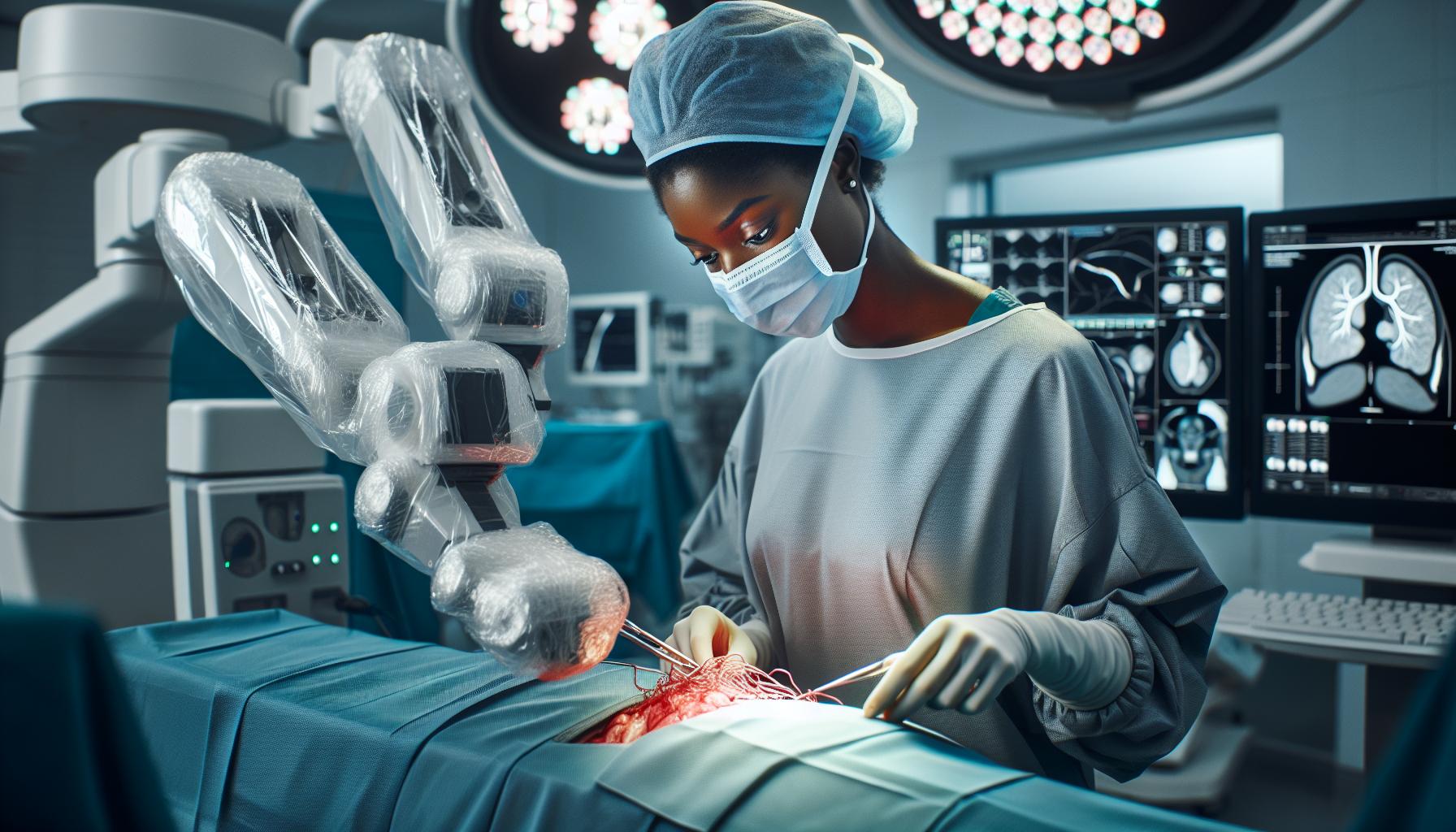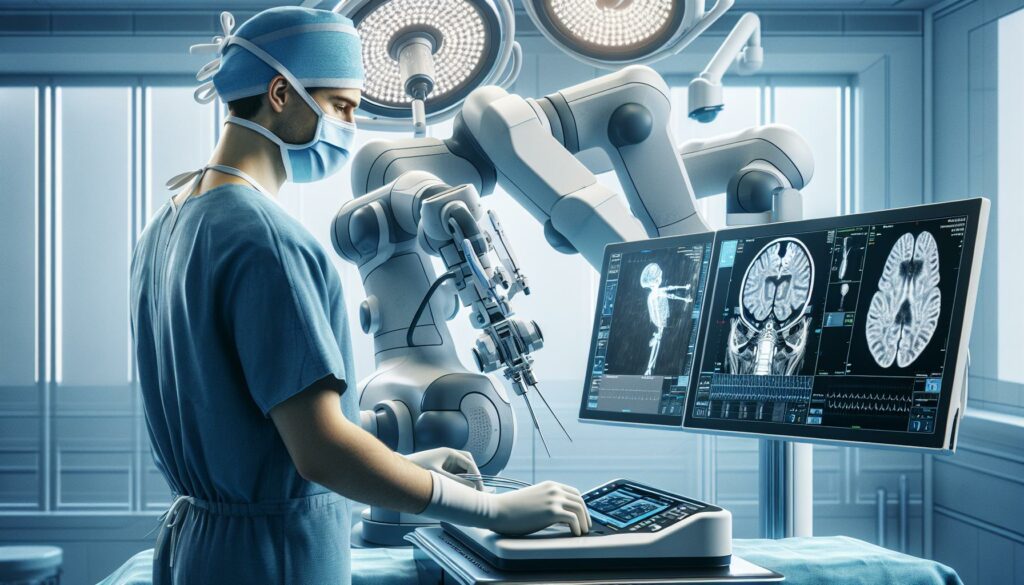In today’s fast-paced world, the intersection of healthcare and technology is transforming how we approach patient care. Remedy robotics is at the forefront of this revolution, leveraging advanced robotics to enhance surgical precision and improve recovery times. As a passionate advocate for innovation in medicine, I’ve seen firsthand how these robotic systems are reshaping the landscape of surgical procedures.
With the ability to assist surgeons in complex tasks, remedy robotics not only boosts efficiency but also elevates patient outcomes. This technology is more than just a trend; it’s a glimpse into the future of healthcare where machines and humans work seamlessly together. Join me as I explore the remarkable advancements in remedy robotics and their profound impact on modern medicine.
Key Takeaways
- Enhanced Surgical Precision: Remedy robotics significantly improves the accuracy of surgical procedures, leading to reduced complications and better patient outcomes.
- Minimally Invasive Techniques: These systems facilitate less invasive surgeries, which result in shorter recovery times, less pain, and minimal scarring for patients.
- Real-Time Imaging and Feedback: The integration of advanced imaging technologies enhances the surgeon’s situational awareness during operations, leading to improved decision-making.
- Collaborative Robotics: Remedy robotics work in tandem with human surgeons, augmenting their capabilities rather than replacing them, fostering a more efficient surgical environment.
- Challenges to Adoption: Despite their benefits, remedy robotics face hurdles such as high costs, regulatory challenges, and the need for extensive training for healthcare professionals.
- Future Innovations: As technology progresses, new developments like AI integration, telemedicine applications, and enhanced haptic feedback systems are expected to further revolutionize the field of surgical robotics.
Remedy Robotics
Remedy robotics transform healthcare by integrating advanced technologies into surgical procedures. This section delves into the core concepts and technical advancements that define remedy robotics.
What Is Remedy Robotics?
Remedy robotics represent a branch of medical technology focused on developing robotic systems for surgical assistance. These systems aid surgeons by providing enhanced precision, stability, and control during operations. Designed to improve patient safety and outcomes, remedy robotics utilize algorithms and real-time data to support decision-making processes in complex surgical environments.
- Precision Control: Remedy robotics offer enhanced manipulation capabilities, which enable surgeons to perform intricate tasks with high accuracy.
- Minimally Invasive Techniques: Many robotic systems use minimally invasive methods that reduce recovery time and surgical trauma for patients.
- Real-Time Imaging: Integrated imaging technologies provide surgeons with real-time visual feedback, improving situational awareness during procedures.
- Collaborative Systems: Some remedy robots work in tandem with surgical teams, enhancing human capabilities rather than replacing them.
- Automated Processes: Certain tasks, like suturing or tissue manipulation, can be automated, allowing surgeons to focus on complex decision-making aspects.
These features collectively underscore the transformative potential of remedy robotics in modern surgical practices.
Applications of Remedy Robotics

Remedy robotics transforms key applications in healthcare, particularly through innovations in surgical procedures and assistance. These advancements set new standards for precision and efficiency in medicine.
Healthcare Innovations
Healthcare innovations from remedy robotics improve patient outcomes and operational efficiency. Robotics allows for the integration of advanced technologies in various medical fields, such as rehabilitation and diagnostics. For instance, robotic-assisted rehabilitation systems facilitate recovery by providing tailored physical therapy programs. The use of robotic systems in diagnostics improves accuracy in procedures like imaging and biopsies. Adaptive algorithms enhance decision-making, supporting healthcare professionals in making informed choices, ultimately elevating the quality of patient care.
Surgical Assistance
Surgical assistance through remedy robotics significantly enhances the surgical experience for both the surgeon and the patient. Robotics provide unparalleled precision during intricate operations, minimizing the risk of human error. Real-time imaging technologies offer surgeons a clear view of the surgical field, improving situational awareness. Furthermore, robotic systems allow for minimally invasive techniques, reducing recovery times and scarring for patients. Automation of routine tasks frees up surgical teams to focus on critical decision-making, thereby improving overall surgical outcomes while increasing operational efficiency.
Benefits of Using Remedy Robotics

Remedy robotics offers numerous advantages in the healthcare sector, particularly within surgical environments. The technology dramatically enhances the quality of care, ensuring better patient experiences and outcomes.
Improved Precision and Safety
Improved precision and safety are hallmarks of remedy robotics. Robotic systems utilize advanced algorithms to refine movements during surgery, allowing for highly accurate incisions and manipulations. This accuracy minimizes the risk of complications, such as excessive blood loss or damage to surrounding tissues. Specifically, robotic arms provide a stable platform that reduces human tremors, allowing surgeons to perform intricate tasks with confidence. The integration of real-time imaging further enhances situational awareness, enabling surgeons to visualize structures that might be obscured, resulting in reduced surgical errors and enhanced overall patient safety.
Enhanced Patient Outcomes
Enhanced patient outcomes emerge from the use of remedy robotics through faster recovery times and decreased hospital stays. Surgical procedures facilitated by robotics often involve minimally invasive techniques, including laparoscopic surgeries, which lead to smaller incisions and less trauma. Patients experience less postoperative pain and a more rapid return to normal activities. Studies indicate that robotic-assisted surgeries can reduce recovery times by up to 30%. Moreover, these systems allow for more personalized treatment plans, tailoring rehabilitation protocols to fit individual patient needs, which promotes quicker healing and rehabilitation. Consequently, patients benefit from improved quality of life and overall satisfaction with their surgical experiences.
Challenges and Limitations

Remedy robotics, while revolutionary, faces several challenges and limitations that hinder its widespread adoption. These hurdles must be addressed to fully realize its potential in healthcare.
Technical Hurdles
Technical hurdles often arise when integrating robotic systems into existing surgical workflows. These issues include the complexity of robotic designs, which can lead to difficulties in operation and maintenance. Potential system failures can pose risks, necessitating redundant safety protocols. Moreover, the high cost of advanced robotic systems may limit access for some healthcare facilities, particularly those in rural or underserved areas. Staff training and adaptation to new technology can also slow the implementation of remedy robotics, as healthcare professionals require time and support to become proficient in using these systems.
Regulatory Considerations
Regulatory considerations significantly impact the deployment of remedy robotics. The approval process for medical devices can be lengthy and complex, involving rigorous testing to ensure safety and efficacy. Variances in regulations across different regions further complicate the development and distribution of robotic systems. Manufacturers must navigate this landscape while adhering to stringent guidelines set by bodies such as the FDA in the United States and the EMA in Europe. Compliance with these regulations often demands significant resources and time, which can delay the introduction of innovative robotic solutions to the market.
Future of Remedy Robotics
The future of remedy robotics holds immense potential for transforming healthcare even further. Innovations and advancements continue to shape this field, paving the way for enhanced patient care and surgical practices.
Emerging Trends
Emerging trends in remedy robotics reflect the increasing integration of artificial intelligence and machine learning. These technologies facilitate real-time data analysis, allowing robotic systems to adapt to individual patient needs during procedures. As data-driven insights become more prevalent, personalized treatment plans will improve. Collaborations between healthcare institutions and tech companies are also on the rise, driving the development of user-friendly robotic interfaces. Surgeons can expect intuitive systems that streamline the surgical workflow and reduce training time. Furthermore, the growing interest in telemedicine encourages the exploration of remote robotic surgery, enabling specialists to operate on patients in diverse locations, ultimately widening access to expert care.
Potential Developments
Potential developments in remedy robotics suggest groundbreaking advancements in surgical capabilities. Innovations in miniaturization may lead to even more compact robotic systems, allowing for greater versatility in minimally invasive surgeries. Enhanced haptic feedback technology could offer surgeons more tactile sensation during procedures, improving control and precision. Additionally, integrating augmented reality into surgical robotics promises better visualization during operations, helping surgeons navigate complex anatomical structures with added confidence. Research into autonomous robotic systems may reduce reliance on human intervention for routine tasks, further increasing efficiency in surgical environments. As research progresses and technology evolves, remedy robotics will likely redefine the landscape of surgical procedures and patient care.
Robotics in Healthcare
Embracing remedy robotics in healthcare is a game changer. It’s not just about enhancing surgical precision; it’s about transforming patient care and outcomes. I see this technology as a bridge between human expertise and machine efficiency, paving the way for safer and more effective procedures.
The potential for future advancements excites me. With ongoing innovations like AI integration and remote robotic surgery, we’re just scratching the surface of what’s possible. As these technologies evolve, I believe they’ll redefine how we approach surgery and rehabilitation, ultimately benefiting patients and healthcare providers alike. The journey of remedy robotics is just beginning, and I can’t wait to see where it leads us.



